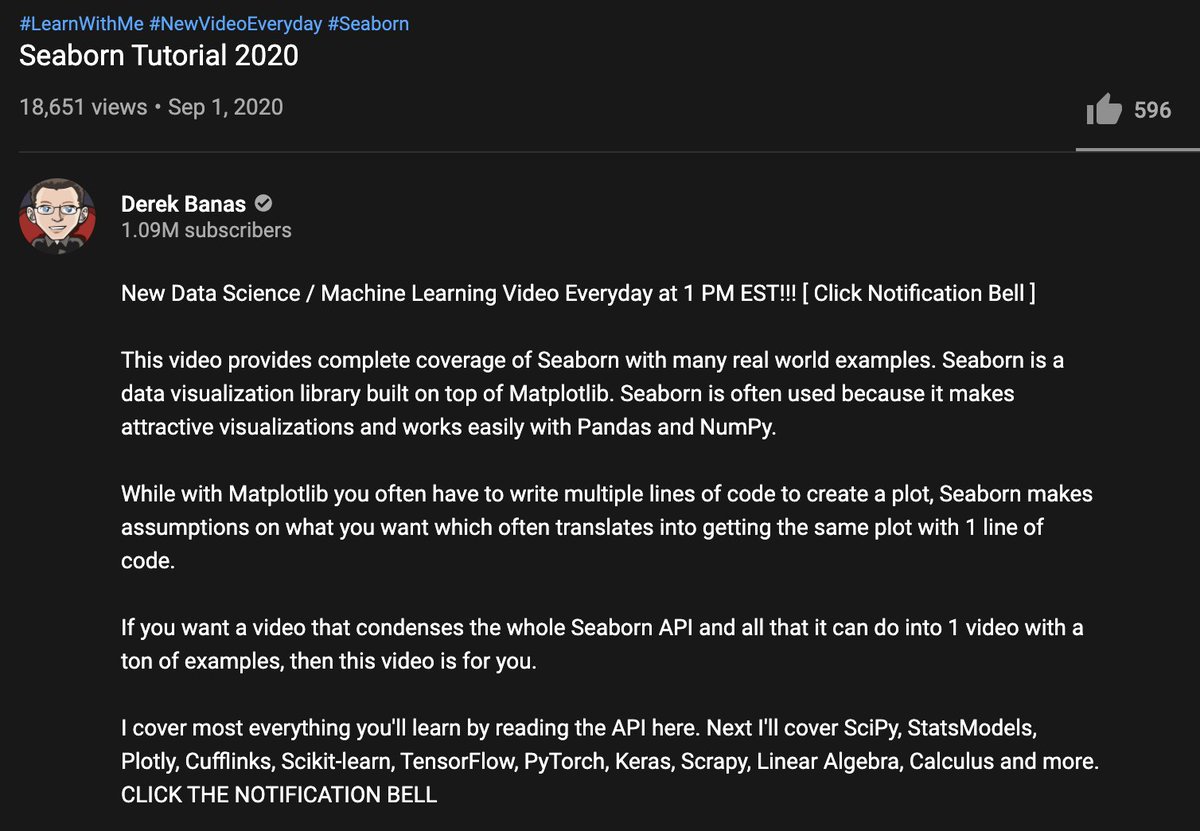Before diving into the math, I suggest first having solid programming skills.
For example👇
(2 / 18)
In Python, these are the concepts which you must know:
- Object oriented programming in Python : Classes, Objects, Methods
- List slicing
- String formatting
- Dictionaries & Tuples
- Basic terminal commands
- Exception handling
(3 / 18)
If you want to learn those concepts for python, these courses are freecodecamp could be of help to you.
🔗Basics:youtube∙com/watch?v=rfscVS0vtbw
🔗Intermediate :youtube∙com/watch?v=HGOBQPFzWKo
(4 / 18)
👉You need to have really strong fundamentals in programming, because machine learning involves a lot of it.
It is 100% compulsory.
(5 / 18)
👉Another question that I get asked quite often is when should you even start learning the math for machine learning?
(6 / 18)
👉Math for machine learning should come after you have worked on a project or two, doesn't have to a complex one at all, but one that gives you a taste of how machine learning works.
(7 / 18)
👉Here's how I do it, I look at the math when I have a need for it.
For instance I was recently competing in a kaggle machine learning challenge.
(8 / 18)
I was brainstorming about which activation function to use in a part of my neural net, I looked up the math behind each activation function and this helped me to choose the right one.
(9 / 18)
The topics of math you'll have to focus on for machine learning
- Linear Algebra
- Calculus
- Trigonometry
- Algebra
- Statistics
- Probability
Now here are the resources and a brief description about them.
(10 / 18)
Neural Networks
> A series of videos that go over how neural networks work with approach visual, must watch.
🔗youtube. com/watch?v=aircAruvnKk&list=PLZHQObOWTQDNU6R1_67000Dx_ZCJB-3pi
(11 / 18)
Seeing Theory
> This website helps you learn statistics and probability in an intuitive way.
🔗seeing-theory. brown. edu/basic-probability/index.html
(12 / 18)
Gilbert Strang's lectures on Linear Algebra (MIT)
> This is 15 years old but still 100% relevant today!
Despite the fact these lectures are made for freshman college students at MIT,I found it very easy to follow👌
🔗youtube. com/playlist?list=PL49CF3715CB9EF31D
(13 / 18)
Essence of Linear Algebra
> A beautiful playlist of videos which teach you linear algebra through visualisations in an easy to digest manner
🔗youtube. com/watch?v=fNk_zzaMoSs&list=PLZHQObOWTQDPD3MizzM2xVFitgF8hE_ab
(14 / 18)
Khan Academy
>The resource you must refer to when you forget something or want to revise a topic super quick
🔗khanacademy. org/math
(15 / 18)
Essence of calculus
> A beautiful series on calculus, makes everything seem super simple.
🔗youtube. com/watch?v=WUvTyaaNkzM&list=PL0-GT3co4r2wlh6UHTUeQsrf3mlS2lk6x
(16 / 18)
The math for Machine learning e-book
> This book is for someone who knows quite a decent amount of high school math like trignometry, calculus, I suggest reading this after having the fundamentals down on khan academy.
mml-book. github .io
(17 / 18)
If you found this thread helpful then don't forget to follow me, it takes a ton of effort to write these threads and your support keeps me going. 🔥🙏
Good luck in your machine learning journey!
(18 / 18 🎉)










